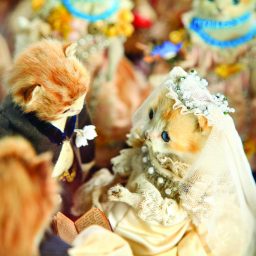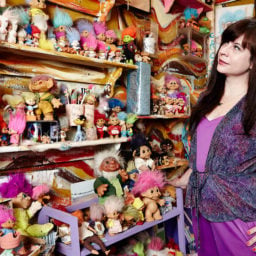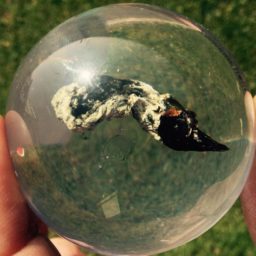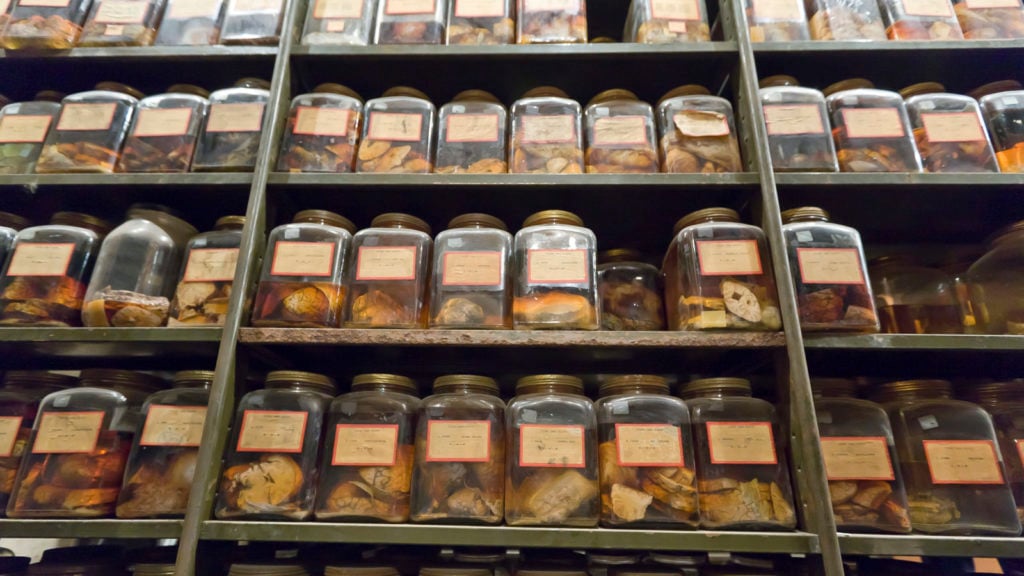

Most of the year, artnet News turns to museums in search of stories related to art, culture, and beauty. But in the spirit of Halloween, as our thoughts turn to ghosts, ghouls, and things that go bump in the night, we’ve scoured the globe and come up with a list of the creepiest, most unsettling institutions, those showcasing everything from ancient mummies and furry taxidermy specimens to sinister-looking dolls and surgical instruments—pretty much the stuff of nightmares. Trick or treat!

Parasites from the Meguro Parasitological Museum, Tokyo. Photo: frugalbinx, via Flickr.
Meguro Parasitological Museum, Tokyo, Japan
“Try to think about parasites without a feeling of fear, and take time to learn about their wonderful world,” suggests the Meguro Parasitological Museum. Easier said than done when the world’s largest tapeworm, a massive 28.8 feet long, is staring you in the face. The museum’s 45,000 specimens of real-life parasites, not to mention the photographs of the gruesomely graphic effects they have on their human hosts, are sure to make you regret your last meal.
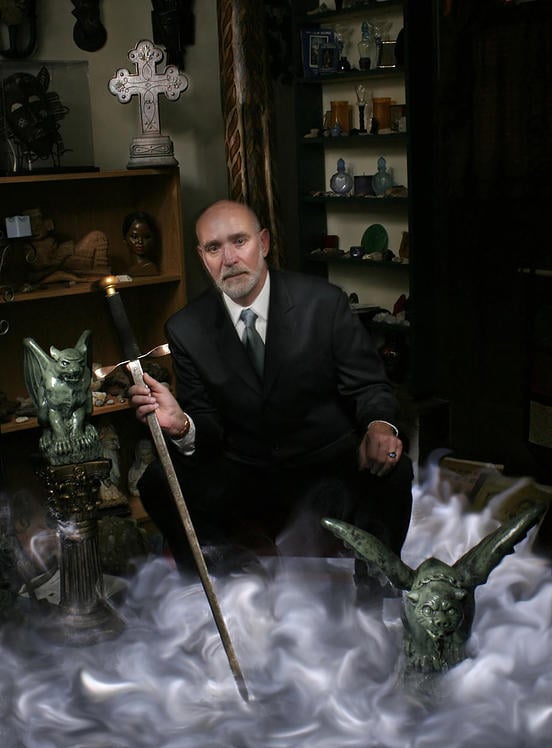
John Zaffis at his Museum of the Paranormal. Photo courtesy of the John Zaffis Museum of the Paranormal.
John Zaffis Museum of the Paranormal, Stratford, Connecticut, US
If you believe in ghosts, the John Zaffis Museum of the Paranormal, which purports to display hundreds of haunted items, is probably not for you. A second-generation paranormal investigator, Zaffis has collected a seemingly mundane array of objects, from China sets to tribal masks, which the previous owners swear were haunted, often violently so. After “cleansing” the possessed pieces through so-called binding rituals, Zaffis puts them on display, keeping “particularly active” objects in special cases. Zaffis’s collection includes a sword which was used in Satanic rituals, a military jacket that gave a teenage girl frightening dreams of life on the battlefield, and the original Virgin Mary statue from the exorcism case that became the basis for the 2009 film The Haunting in Connecticut.
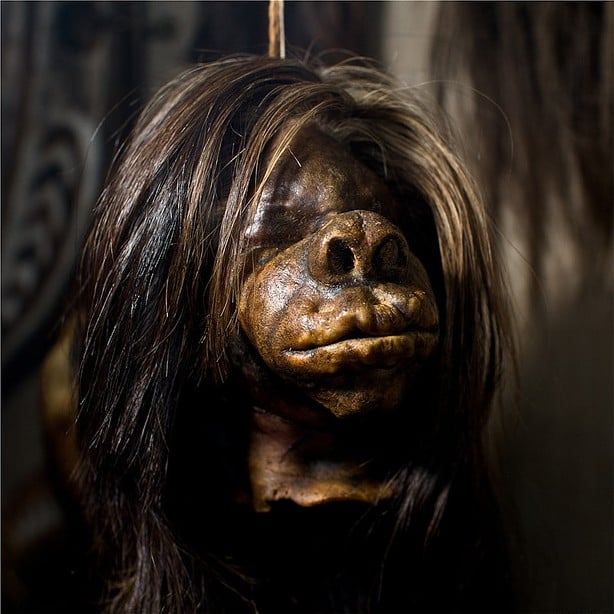
A shrunken head at the Pitt Rivers Museum, Oxford.
Photo: Brett Tully, via Flickr.
Pitt Rivers Museum, Shrunken Heads of the Amazon, Oxford, England
This archaeology and anthropology museum wouldn’t make the list, save for its collection of shrunken heads. It may seem like the purview of fiction, but until the 1960s, headshrinking was a real practice. Amazonian headhunters beheaded their enemies, skinning their heads, filling them with hot sand, and submerging them in hot water until they shrunk down and could be used as ritualistic jewelry. The shrunken heads are known as “tsantsas.”
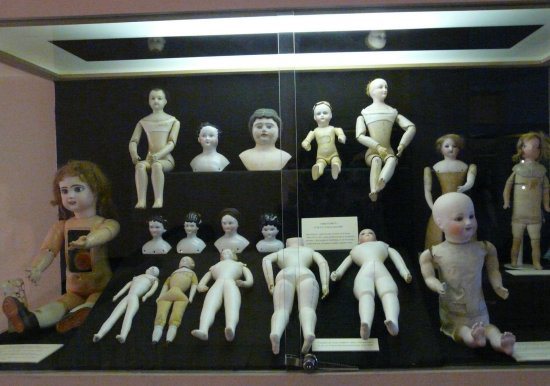
Monaco National Museum: Automatons and Dolls of Yesteryear, Monaco. Photo: via the Chive.
Monaco National Museum: Automatons and Dolls of Yesteryear, Monaco
The Monaco National Museum of Automatons and Dolls of Yesteryear takes an already-creeptastic collection of 19th-century dolls to the next level with an assortment of robotic dolls. When wound up, the dolls move around, doing things like breathing, sighing, and playing the piano, all the while staring at you with their dead, dead eyes. Be sure to leave the kids at home.
UPDATE: The dolls were removed from public viewing in 2009 and the museum is now called the Nouveau Musée National de Monaco, a contemporary art museum.
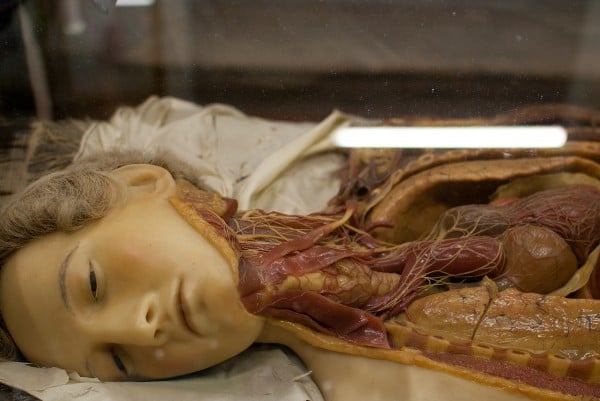
A wax “Anatomical Venus” model at La Specola in Florence.
Photo: courtesy Dangerous Minds.
La Specola (the Museum of Zoology and Natural History), Florence, Italy
This underrated Florentine attraction, open since 1775, may at first glance appear to be your average natural history museum, with slightly dusty taxidermy specimens. Things get creepy with the museum’s impressive collection of life-size wax models of human body parts, incredibly detailed facsimiles of various organs and organ systems. Even creepier are the full body “Venus” models of beautiful women that appear to have been disturbed in the midst of an autopsy.
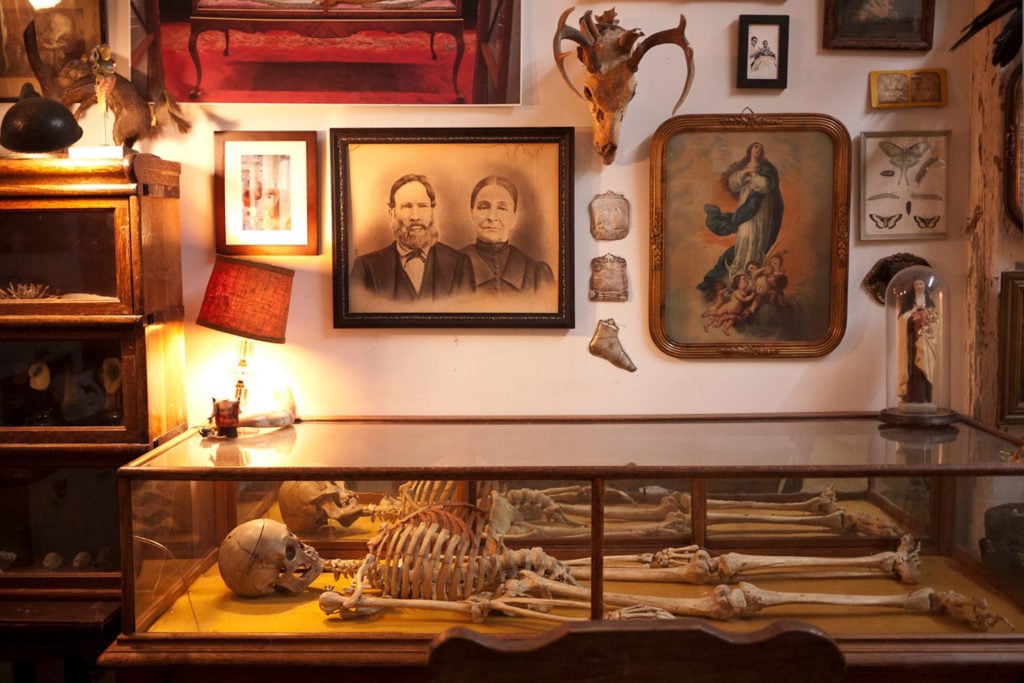
Brooklyn’s new Morbid Anatomy Museum boasts 2,500 books and one human skeleton. Courtesy the Morbid Anatomy Museum.
The Morbid Anatomy Museum, Brooklyn, New York, US
Perhaps the most recently-founded institution on the list, the Morbid Anatomy Museum made its debut this summer (see “New Morbid Anatomy Museum Opens in Brooklyn [Where Else?]“), sporting a collection of obscure artifacts that “fall between the cracks of high and low culture, art and science, beauty and death,” as per the Brooklyn museum’s mission statement. Given its location, the museum’s predilection for taxidermy is not unexpected, but the authentic human skeleton may still give you a fright. The institution’s biggest asset is its 2,500 book-strong library, which covers medical history, death rituals, and other morbid topics you probably don’t want to read about under the covers late at night.
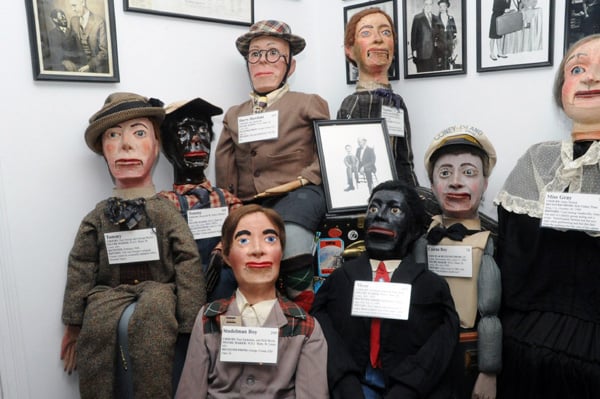
Ventriloquist dummies at the Vent Haven Ventriloquist Museum.
Photo: courtesy the Vent Haven Ventriloquist Museum, Fort Mitchell, Kentucky.
The Vent Haven Ventriloquist Museum, Fort Mitchell, Kentucky, US
There’s a reason this is the only museum in the world dedicated to the art of ventriloquism: This many ventriloquist dummies were never meant to coexist. One may be a sardonic sidekick, but the museum’s collection of over 800 dolls becomes a veritable army, the articulated dolls seemingly poised to kill you the moment you turn your back.

Swallowing these 1,446 objects killed a Glore Psychiatric patient. Now, they are displayed at the museum.
Photo via Wikimedia Commons.
The Glore Psychiatric Museum, St. Joseph, Missouri, US
Most people would get freaked out just visiting a former mental hospital, but over in Missouri, they’ve transformed the State Lunatic Asylum No. 2 into a museum. Displays include recreations of mid-century psychiatric treatment, the disturbing art produced by patients, and a rather large mosaic of buttons, safety pins, and other decidedly non-edible objects (1,446 in all) removed from the stomach of a woman who suffered from pica, or compulsive swallowing.

Zac Efron waxwork at Madame Tussauds, London (2008).
Photo: courtesy Madame Tussauds, London.
Madame Tussauds, multiple locations worldwide
In addition to wax figurines of creepy celebrities, like Zac Efron who looks like he wants to suck your blood, this museum has a graphic replica of one of the victims of Jack the Ripper as part of the London location’s Chamber of Horrors. The institution’s history is actually legitimately gory. The original Tussaud got her start making wax imprints of the severed heads of men guillotined during the French Revolution. Madame Tussaud’s also gets bonus points for inspiring North Korea’s wax shrine to Kim Jong-Ill.

A textbook illustration showing the procedure for human castration, at the Museo della Scuola Chirurgica Preciana, in Preci, Italy. Photo: Anne Robichaud, via Anne’s Italy.
Museo della Scuola Chirurgica Preciana, Preci, Italy
This small Italian museum celebrates the medical breakthroughs of the local order of Benedictine monks, who became doctors in the 10th century, pioneering surgical procedures. (They specialized in hernias, cataracts, and castrati.) The surgical tools used by these antecedents of modern medicine in the 17th century look more like instruments of torture and death than anything you’d want in the hands of a doctor tasked with saving your life.
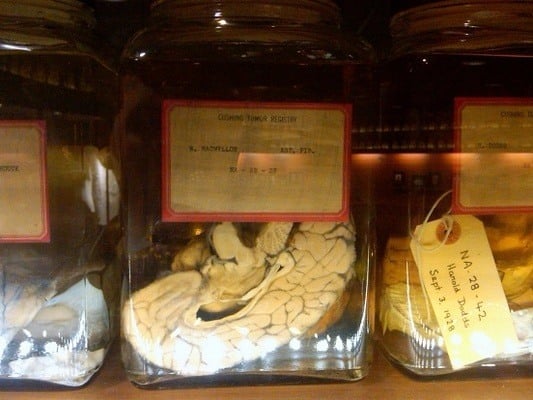
Brains on display at the Cushing Center.
Photo: J.W. Ocker, via Atlas Obscura.
Cushing Center at Yale University, New Haven, Connecticut, US
Brains in jars. Does it get any grosser? Even if you don’t remember that scene from Harry Potter and the Order of the Phoenix where a tank full of brains attacks Ron Weasley (you’re welcome), there is still plenty to be scared about here. The brain collection at Yale’s Cushing Center may be the life’s work of neurosurgery pioneer Harvey Cushing, but it totally seems like the holdings of a mad scientist who kidnaps, kills, and removes the brains of his victims all in the deranged name of science.
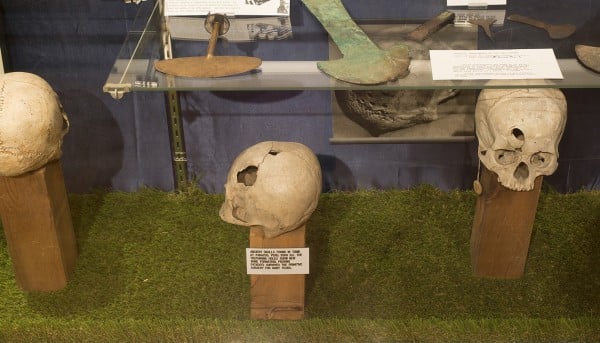
Annie Heckman, Peru, 1953 (Trephining Letter) (2013), at the International Museum of Surgical Science, Chicago.
Photo: Nathan Keay.
International Museum of Surgical Science, Chicago, Illinois, US
If a small Umbrian town is too far afield, Chicago’s surgical museum is closer to home, and boasts a collection of over 7,000 medical artifacts, 5,000 books and medical journals, and 600 paintings, prints, and sculptures depicting medical procedures. A current residency exhibition from artist Annie Heckman is inspired by trepanning—the terrifying practice of drilling of holes in patients’ skull—as seen in pre-Columbian Peru. Among the permanent collection, don’t miss the original plaster cast of the death mask of Napoleon—although they don’t appear to have any of his hair, which was recently stolen from a Australian museum.

An iron cage at the Museum of Medieval Torture Instruments.
Photo: courtesy the Museum of Medieval Torture Instruments, Amsterdam.
The Museum of Medieval Torture Instruments, Amsterdam, the Netherlands
If you thought the medieval medical tools were bad, wait until you see the stuff that was actually used to torture and kill prisoners. There are fewer than five floors worth of devices such as the guillotine, the interrogation chair, and the iron maiden, as well as an inquisitorial torture chamber. In case your imagination isn’t vivid enough to visualize what these instruments might do to the human body, the museum employs wax models to show exactly how painful torture of yore really was. The museum’s promise? “You leave thankful our society has left the dark ages behind.”

Jack “Dr. Death” Kevorkian with the Thantron, the assisted suicide device he invented, in 1991. The Thantron is now part of the collection of the Museum of Death in Los Angeles.
The Museum of Death, Los Angeles, California, US
Looking for some death education? The Museum of Death, originally housed in an old mortuary, is sure to disturb with its serial killer artwork, crime scene photos from the Charles Manson and Black Dahlia murders, and its coffin collection, not to mention the guillotined head of serial murderer, and the “Bluebeard of Paris,” Henri Landru. Recently added to the collection is the Thanatron, the intravenous drip suicide machine created by Jack “Dr. Death” Kevorkian. “We’re not here to tell people what to think,” museum cofounder J.D. Healy told the Los Angeles Times. “Is it murder or is it suicide? That’s what museums are supposed to do—ask the hard questions.”
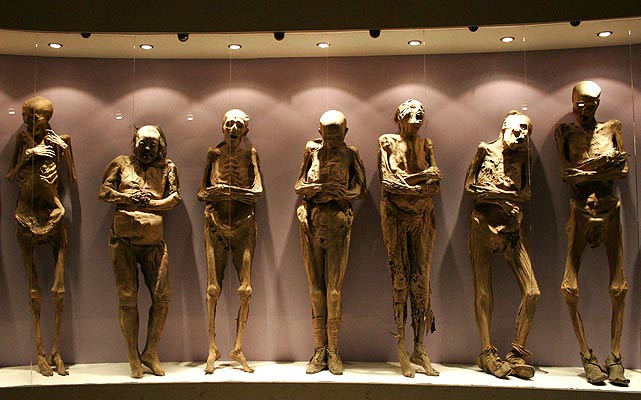
Mummies at the Museo de las Momias De Guanajuato, Guanajuato, Mexico.
Photo: Leopoldo Smith, via Nuesta Mirada.
Museo de las Momias De Guanajuato, Guanajuato, Mexico
Apparently Mexicans flock to see the mummified remains of their fellow countrymen and women who died during the cholera outbreak of 1833. Unlike the Egyptian mummies, or the ashen remains of those buried at Pompeii, the dead at the Museo de las Momias aren’t separated from us by millennia, which makes gawking at their remains all the more disconcerting. Children and even babies are among the dead on display, many of whom appear to have died in agony.
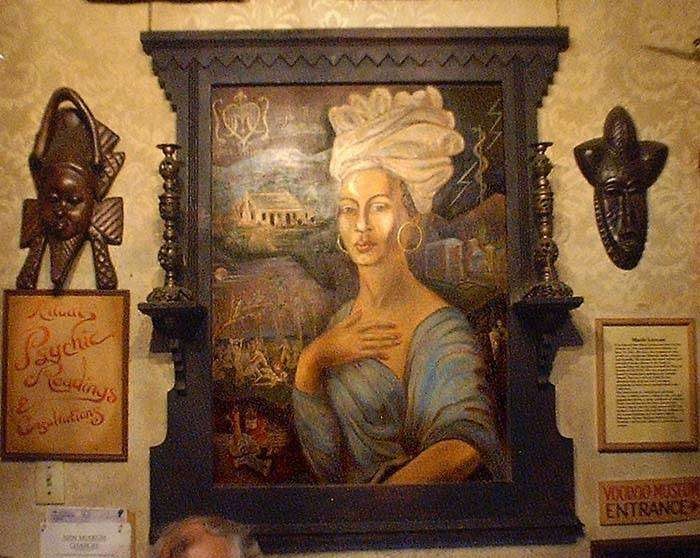
Charles Massicot Gandolfo, portrait of Voodoo Queen Marie Laveau (1977), on display at the Voodoo Museum, New Orleans. Photo courtesy of the Voodoo Museum, New Orleans.
The Voodoo Museum, New Orleans, Louisiana, US
According to family lore, museum founder and artist Charles Massicot Gandolfo was descended from a man who was raised by a real-life voodoo queen. Today, his institution offers a glimpse into New Orlean’s mystical, occult underworld, offering psychic readings, fortune telling, and tours of the nearby St. Louis cemetery. The gift shop sells chicken feet, snake skins, and love potions. Replete with altars, shrines, and, yes, voodoo dolls, a visit to this quirky little museum is sure to leave you worrying whether you’ve inadvertently offended any secret voodoo practitioners.
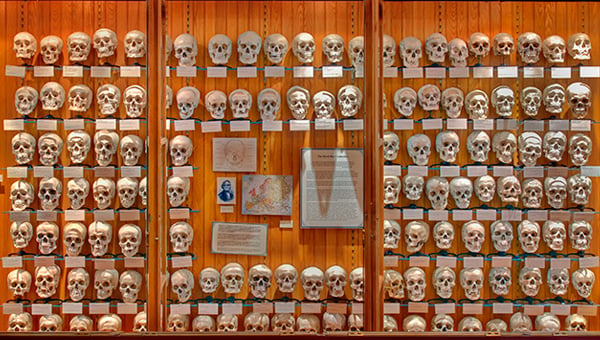
Some of the 139 human skulls in the Joseph Hyrtl collection at the Mütter Museum.
Photo: courtesy the Mütter Museum.
The Mütter Museum, Philadelphia, Pennsylvania, US
No list of creepy museums would be complete without the Mütter Museum, which has been disturbing visitors with its selection of medical oddities, anatomical specimens, wax models, and antique medical equipment since 1858. Originally intended as a tool for medical education, the collection has become an offbeat attraction for tourists who come to gawk at President Grover Cleveland’s tumor, slices of Albert Einstein’s brain, and the conjoined liver of Siamese twins Chang and Eng Bunker, among other freaky specimens.
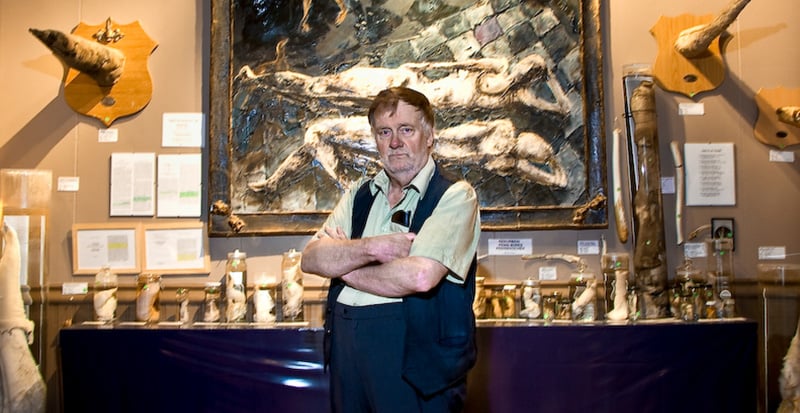
Sigurður Hjartarson, curator and founder of Iceland’s Phallological Museum, at the offbeat institution. Photo courtesy of Iceland’s Phallological Museum.
Icelandic Phallological Museum, Reykjvik, Iceland
Visitors to this Iceland museum, the world’s only one dedicated to the phallus, have the chance to get up close and personal with penises from 93 different species, from a massive blue whale schlong to a microscopic hamster wiener, as well as phallic arts and crafts such as founder Sigurður Hjartarson’s lampshades made from bull scrotums. Earlier this year, the institution’s quest to add a human specimen to its holdings became the subject of the documentary film The Final Member, with two men vying to be the first to donate their own junk to the collection.
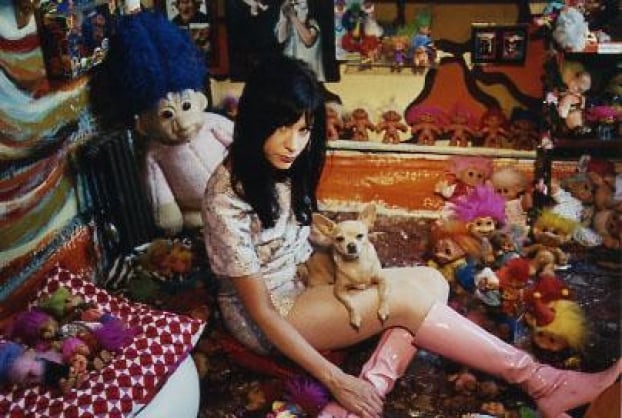
Rev Jen at the Troll Museum. Photo: courtesy the Troll Museum, New York.
The Troll Museum, New York, New York, US
There’s something disconcerting about a roomful of overly cheerful, colorful Troll dolls. But, the Lower East Side’s Troll Museum is just that. Run out of the apartment of founder Rev Jen, it was on the brink of closing earlier this year when Rev Jen was threatened with eviction (see “Help Save New York’s Troll Museum“). Whether you find the prospect of a psychedelic ’60s-style girl’s bedroom packed wall-to-wall with the popular children’s toy delightfully whimsical or slightly off-putting, Rev Jen’s GoFundMe campaign to keep the museum afloat has reached its $5,000 goal, which means this weird slice of the city will be around for years to come.


